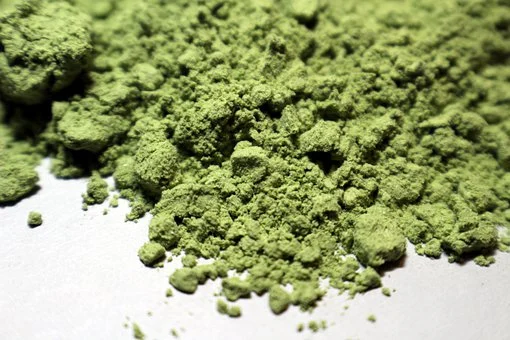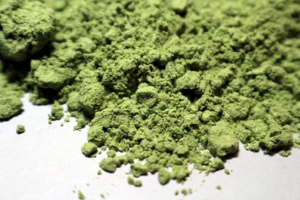Exploring Kratom: Potential Therapeutic Benefits and Risks
February 28, 2024

Kratom, scientifically known as Mitragyna speciosa, is a tropical tree native to Southeast Asia, related to the coffee family. It has been traditionally used in its native regions to combat fatigue and improve work productivity, as well as for its medicinal properties to treat pain, diarrhea, and as a substitute for opium during religious ceremonies. The primary active compounds in kratom, mitragynine and 7-hydroxymitragynine, have been found to interact with opioid receptors in the brain, producing both stimulant-like effects (such as increased energy and alertness) and opioid-like effects (including relaxation and pain relief). This dual nature contributes to its varied use in the Western world, where it is employed to manage pain and potentially assist with opioid withdrawal symptoms.
Research on kratom is still in early stages, and there’s a lot to uncover about its efficacy, safety, and potential therapeutic uses. The National Center for Complementary and Integrative Health (NCCIH) highlights the need for more research to fully understand the short- and long-term effects of kratom use, its safety profile, and its potential for medical applications. Despite its use by some to manage opioid withdrawal symptoms, kratom itself has not been officially recognized as safe and effective for this or any other medical use by regulatory agencies like the U.S. Food and Drug Administration (FDA).
A study supported by the National Center for Complementary and Integrative Health and other research initiatives has explored the chemical composition and biological effects of kratom. This includes in vitro studies suggesting implications for its efficacy and potential drug interactions, underlining the complexity of kratom’s effects on the human body and the necessity for further investigation.
Johns Hopkins Medicine conducted a survey revealing that kratom might have therapeutic effects with a relatively low potential for abuse or harm. The survey included 2,798 participants, with the majority reporting use for alleviating pain, anxiety, and depression. Notably, a significant portion of users took kratom to manage opioid withdrawal, with some experiencing extended periods without returning to prescription opioids or heroin. The survey also assessed the potential for kratom-related substance use disorder, finding it comparable to or lower than the dependency rates associated with prescribed opioid medications. Side effects reported were generally mild, with a small percentage seeking medical treatment for severe side effects.
These findings suggest a potential for kratom in therapeutic settings, especially regarding pain management and opioid withdrawal support. However, the lack of regulation and standardization, potential for abuse, and reported side effects emphasize the need for cautious approach and further scientific exploration to fully understand kratom’s benefits and risks.
When considering kratom, a natural herb used for a variety of purposes including pain relief and potential assistance with opioid withdrawal, it’s important to approach its use with caution and informed advice. Despite its potential benefits, there are significant concerns about its safety, regulatory status, and potential for abuse. Here’s a compilation of advice and reviews from medical professionals regarding kratom use:
- Research and Regulatory Status: The National Center for Complementary and Integrative Health (NCCIH) points out that research on kratom is in its early stages. The health effects of kratom, its safety, and its therapeutic uses are not well understood. Kratom is not approved by the FDA for any medical use, and its legal status varies by location.
- Potential for Abuse and Addiction: Although some individuals use kratom to attempt to manage opioid addiction, it may itself be addictive. Users might experience withdrawal symptoms upon cessation. Side effects can range from mild (e.g., nausea, constipation) to severe (e.g., seizures, liver problems). The potential for drug interactions, especially when combined with other substances, raises additional safety concerns.
- Clinical Observations: A survey conducted by Johns Hopkins Medicine suggests that kratom may have therapeutic effects and a relatively low potential for abuse. However, this is contrasted with regulatory concerns and the absence of standardization in kratom products. The survey found that while some users report benefits for pain management, anxiety, and opioid withdrawal, the risk of adverse effects and the potential for abuse cannot be ignored.
- Doctor’s Advice: Physicians and healthcare providers generally advise caution with kratom use due to the lack of comprehensive research and standardized products. They recommend discussing any intention to use kratom with a healthcare provider, especially for individuals with a history of substance abuse or those taking other medications. The importance of considering legal implications and safety concerns cannot be overstated.
- Health Reviews: Reviews from the medical community often emphasize the need for further scientific research to establish kratom’s safety profile, effective dosages, and potential health benefits. The mixed evidence regarding its efficacy and risks suggests a complex interplay of factors that must be carefully considered by users and healthcare professionals alike.
In summary, while there is anecdotal evidence and some preliminary research suggesting potential benefits of kratom for certain conditions, the consensus among healthcare professionals is one of caution. The variability in individual responses, the potential for addiction, the lack of regulatory oversight, and the possibility of serious side effects are significant concerns that underscore the need for more rigorous scientific studies to fully understand the implications of kratom use. Always consult with a healthcare provider before beginning any new treatment, including natural supplements like kratom.
Case studies on kratom use provide valuable insights into its effects, both beneficial and adverse, from a real-world perspective. Here are summaries of hypothetical case studies based on the kind of information available in scientific literature and user reports. These examples are designed to illustrate various outcomes associated with kratom use, including potential therapeutic benefits and risks.
Case Study 1: Managing Chronic Pain without Prescription Opioids
- Background: A middle-aged individual with chronic back pain, previously managed with prescription opioids, sought alternatives to avoid the risk of dependency and adverse side effects associated with long-term opioid use.
- Intervention: The individual began using kratom, consuming it a couple of times daily in tea form to manage pain levels.
- Outcome: The patient reported significant relief from chronic pain, enabling a reduction in the use of prescription opioids. No severe adverse effects were reported, though the individual noted occasional mild nausea and constipation.
Case Study 2: Kratom Use for Opioid Withdrawal Symptoms
- Background: A person struggling with opioid addiction, including prescription opioids and heroin, sought a natural remedy to ease withdrawal symptoms during their recovery process.
- Intervention: They started using kratom based on recommendations from online forums, aiming to alleviate symptoms of opioid withdrawal.
- Outcome: The person reported that kratom significantly eased their withdrawal symptoms, allowing them to remain opioid-free for an extended period. However, they experienced kratom dependence and had to manage withdrawal symptoms from discontinuing kratom use.
Case Study 3: Adverse Effects and Hospitalization
- Background: An individual began using kratom for anxiety and depression without consulting a healthcare provider, purchasing it online.
- Intervention: The kratom dosage was self-determined and not monitored by a healthcare professional.
- Outcome: The person experienced severe adverse effects, including elevated heart rate, liver dysfunction, and signs of psychosis. They were hospitalized for acute liver injury, suspected to be linked to kratom use, particularly due to potential contamination or interaction with other unknown substances in the unregulated product.
Case Study 4: Successful Use for Chronic Fatigue
- Background: A person suffering from chronic fatigue, not effectively managed by conventional treatments, turned to kratom after researching alternative options.
- Intervention: Kratom was used in small doses to enhance energy levels and productivity throughout the day.
- Outcome: The individual reported improved energy levels and productivity with minimal side effects. However, they remained cautious about potential dependency and regularly monitored their health with their physician.

Considerations and Recommendations
These case studies highlight the diverse outcomes of kratom use, reflecting the complex nature of its effects on different individuals. They underscore the importance of:
- Consulting healthcare professionals before starting kratom, especially for those with preexisting health conditions or who are taking other medications.
- The need for more rigorous, controlled research to better understand kratom’s efficacy, safety profile, and appropriate dosing.
- The risks associated with unregulated products, including potential contamination and variable potency.
Given the variability in individual responses and the potential for serious adverse effects, individuals should proceed with caution and seek professional advice when considering kratom for therapeutic uses.
10 FAQs on Kratom’s Potential Benefits
- What is kratom used for traditionally?
- Traditionally, kratom has been used in Southeast Asia to combat fatigue, improve work productivity, and during religious ceremonies. It has also been used for its medicinal properties to treat pain and diarrhea.
- Can kratom help with pain management?
- Yes, many users report using kratom for pain relief, particularly for chronic conditions such as back, shoulder, and knee pain, due to its analgesic properties linked to active compounds that interact with opioid receptors in the brain.
- Is kratom effective for treating opioid withdrawal symptoms?
- Preliminary user reports and surveys suggest kratom may ease opioid withdrawal symptoms, with some individuals using it as a tool in their recovery process to manage cravings and withdrawal effects.
- Can kratom assist with anxiety and depression?
- Some users take kratom for anxiety and depression, citing its mood-lifting and sedative effects, although scientific research supporting these uses is limited and more studies are needed.
- What are the stimulant effects of kratom?
- At lower doses, kratom can produce stimulant effects, including increased energy and alertness, similar to the caffeine effects from its coffee family lineage.
- How does kratom work in the body?
- Kratom’s active compounds, mitragynine and 7-hydroxymitragynine, interact with opioid receptors in the brain, producing both stimulant effects at lower doses and sedative, pain-relieving effects at higher doses.
- Are there any safety concerns with using kratom?
- Yes, there are safety concerns including potential for addiction, withdrawal symptoms, and a variety of side effects ranging from mild (nausea, constipation) to severe (seizures, liver problems). Its interaction with other drugs and long-term effects are also areas of concern.
- Is kratom legal and safe to use?
- Kratom’s legal status varies by country and within the United States by state. The FDA has not approved kratom for any medical use, and it is considered a “drug of concern” by the DEA. Users should check local regulations and proceed with caution.
- How is kratom consumed?
- Kratom can be consumed in various forms including fresh or dried leaves, powder, capsules, tea, and extracts. The method of consumption can affect onset and duration of effects.
- What ongoing research exists on kratom’s potential benefits and risks?
- Research is ongoing to better understand kratom’s pharmacology, its effects on opioid withdrawal, pain management, and safety profile. This includes studies on its active compounds, user surveys, and clinical trials to evaluate efficacy and safety.

Recently, the Cannabis industry has risen to new heights. Its exponential growth has molded several budding writers, business chains, and experts who have a passion for the same.
Similar has been the journey of Nick Jones. He has grown himself as a powerful individual personality and a cannabis industry expert, having decades of experience in the industry.
His wide range of experience comprises performing intriguing roles at various esteemed organizations. In addition, he has also worked as a copywriter, SEO editor, and researcher for leading cannabis businesses in the United States of America.
Interestingly, he has traced the transformation and progression of the cannabis industry first-hand that adds even more credibility, insights, and value to his works. Therefore, the niches he has covered and has written about: Vape, Kratom, Marijuana, Delta 8 THC, and CBD, attract superb engagement and eyeballs from the audience.
Conclusively, his out-of-the-box ideas and interests continue to be an inspiration for many young cannabis enthusiasts.
